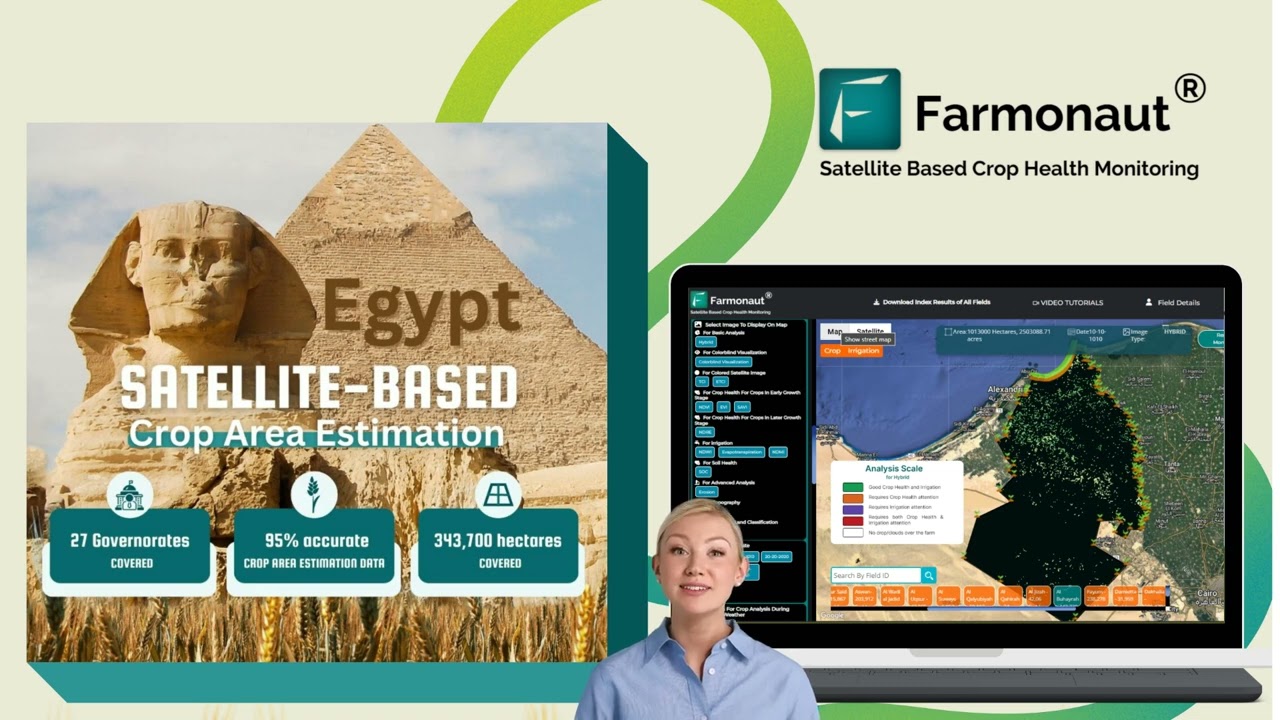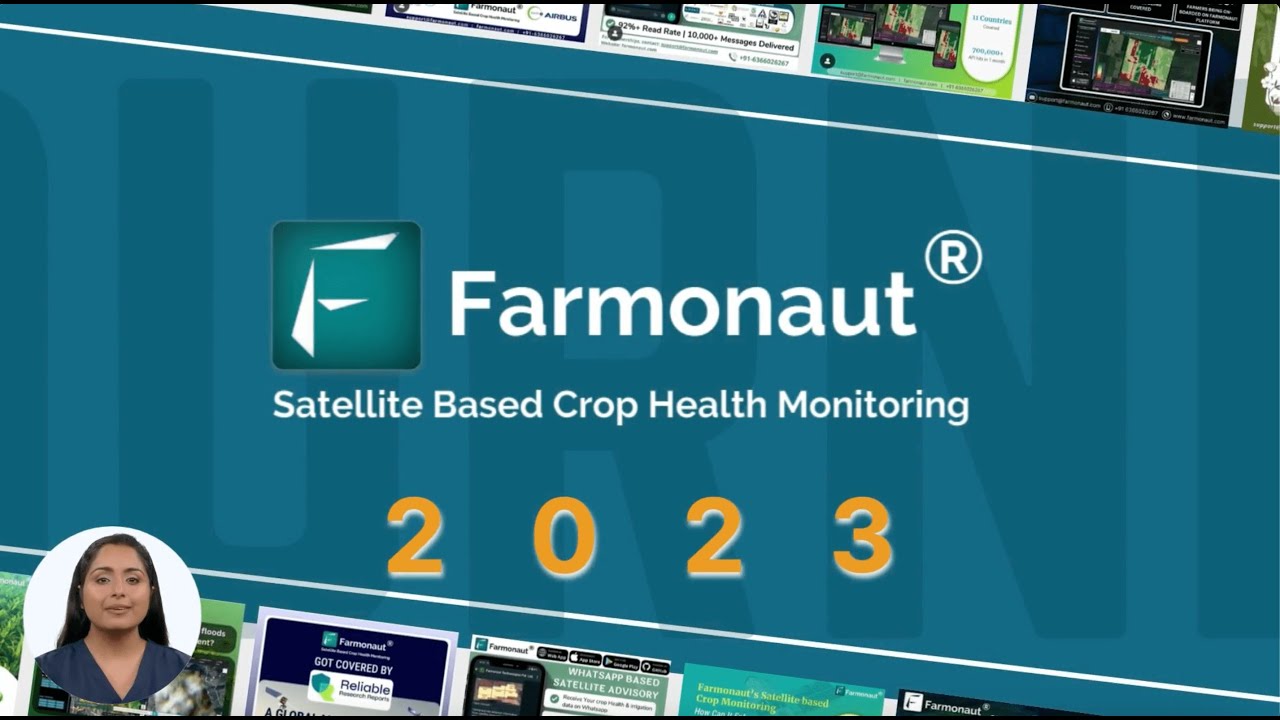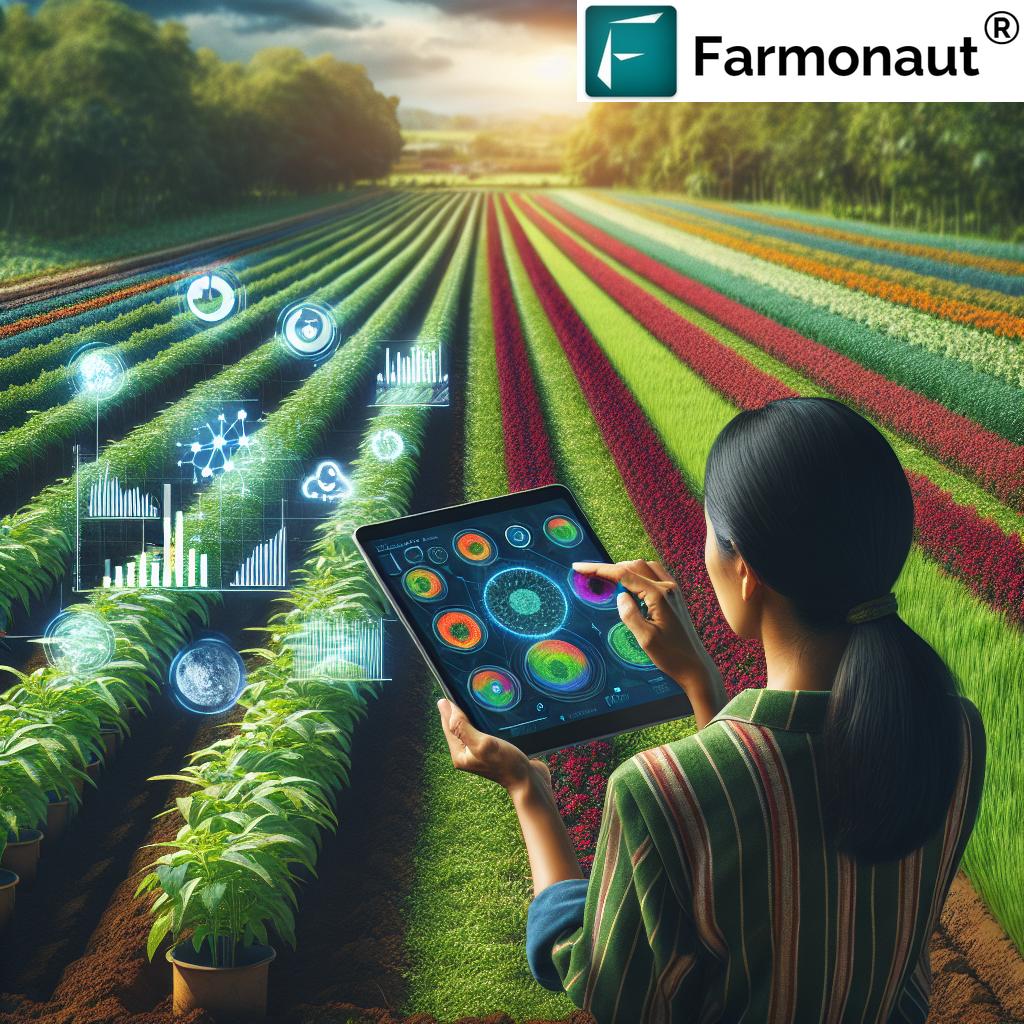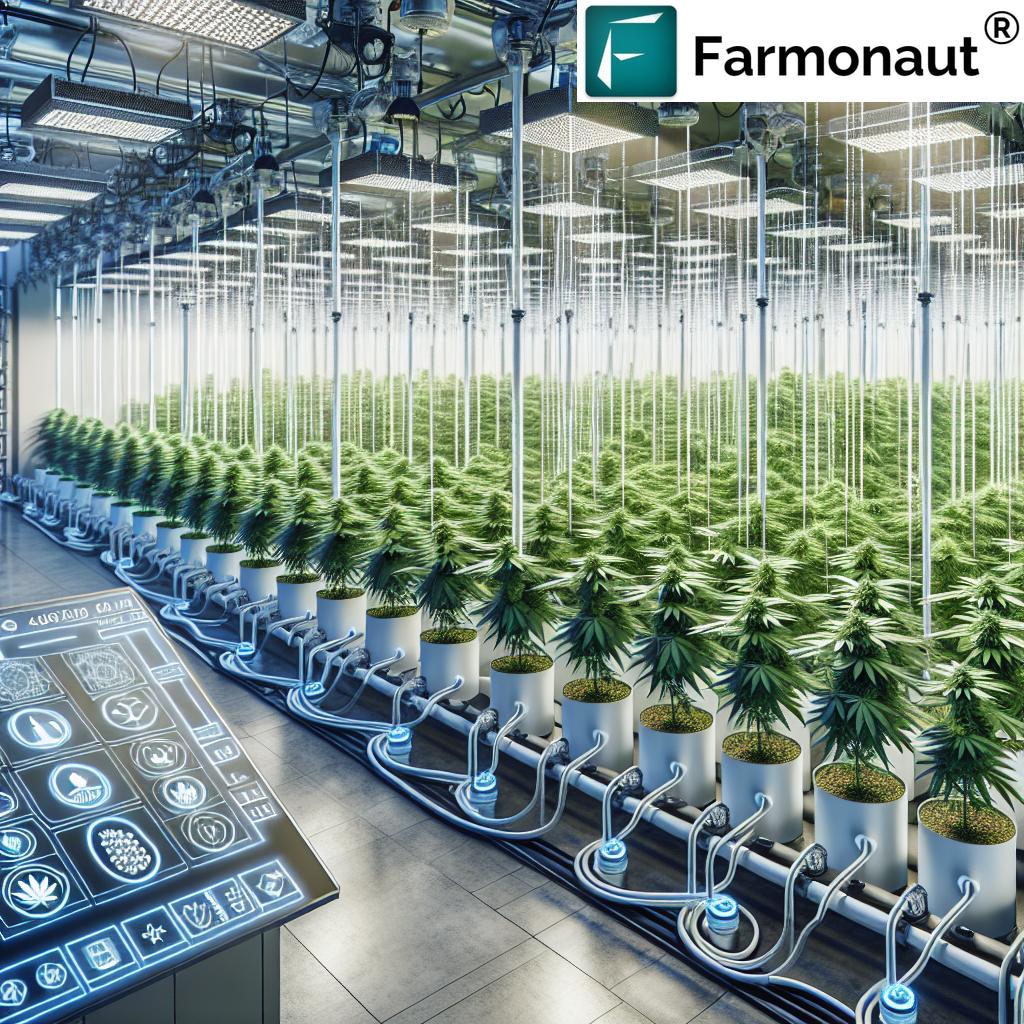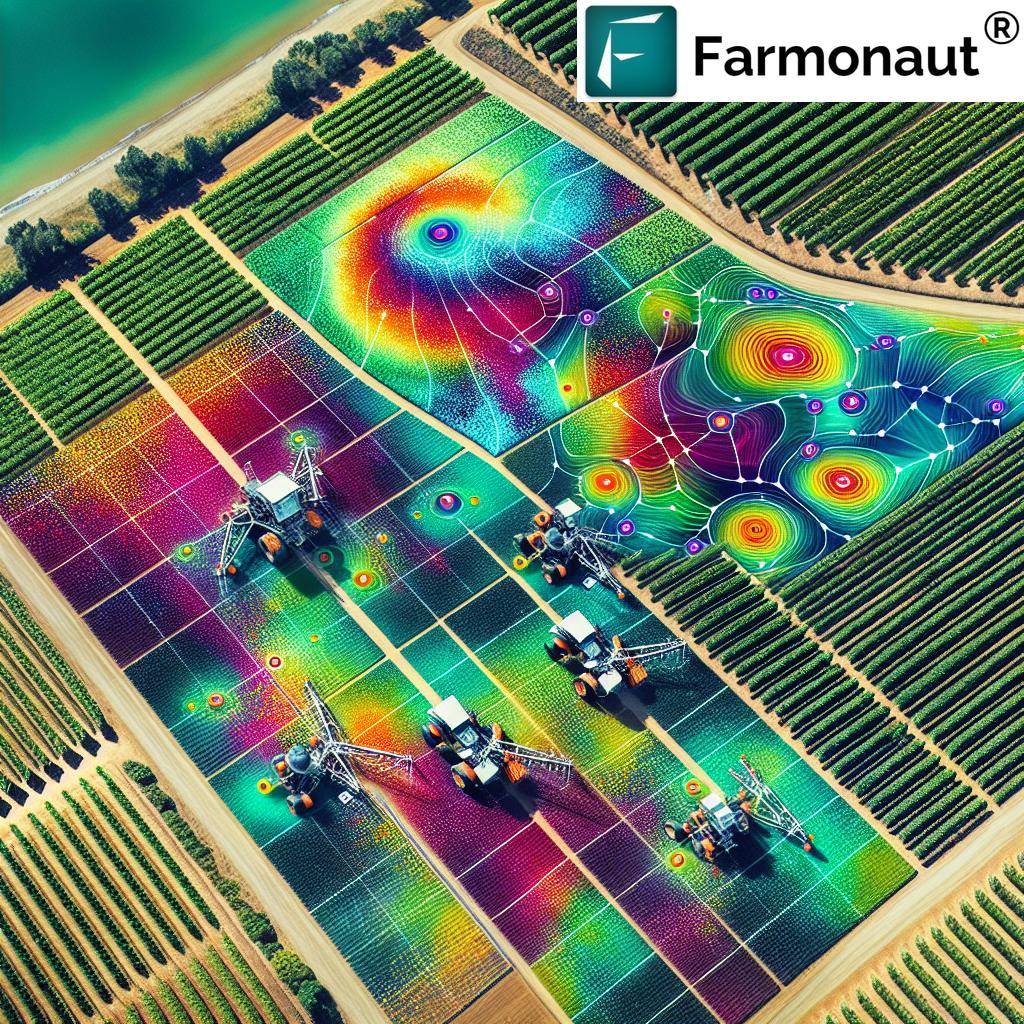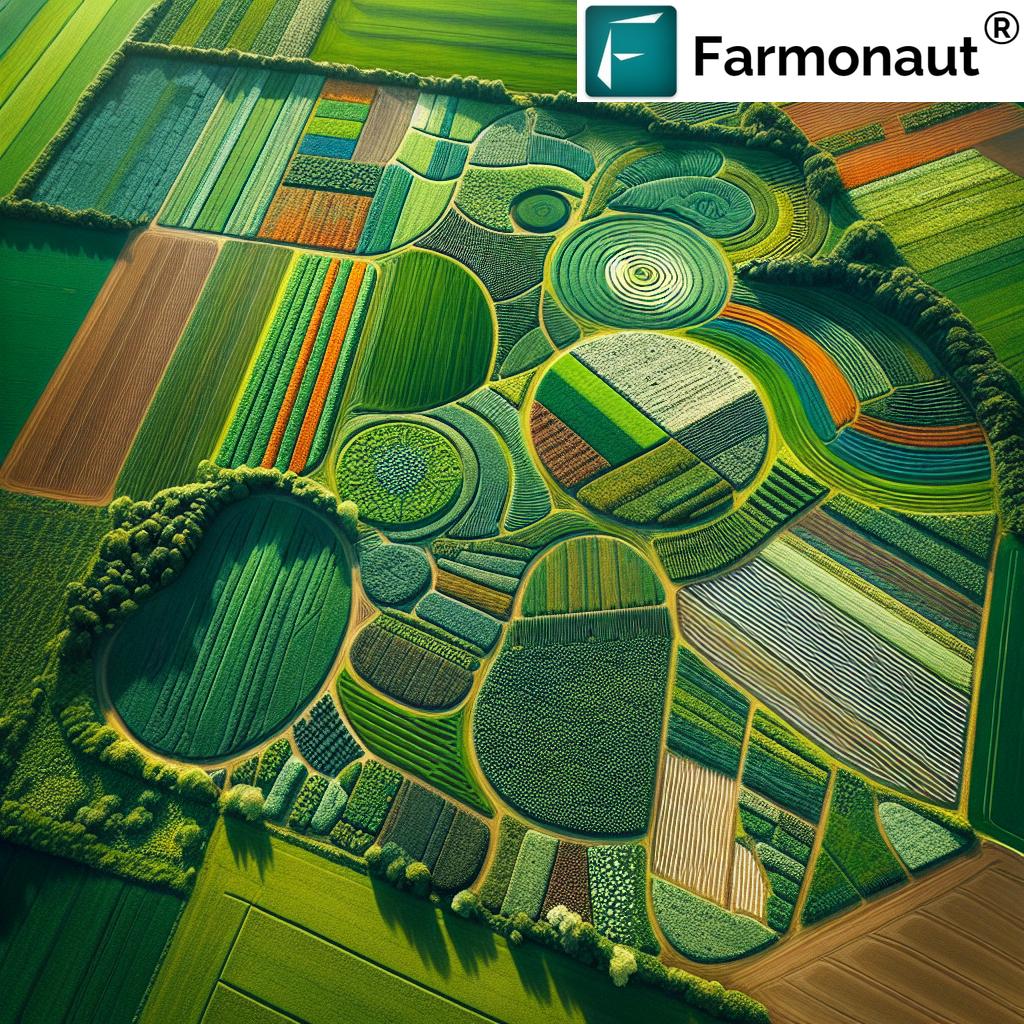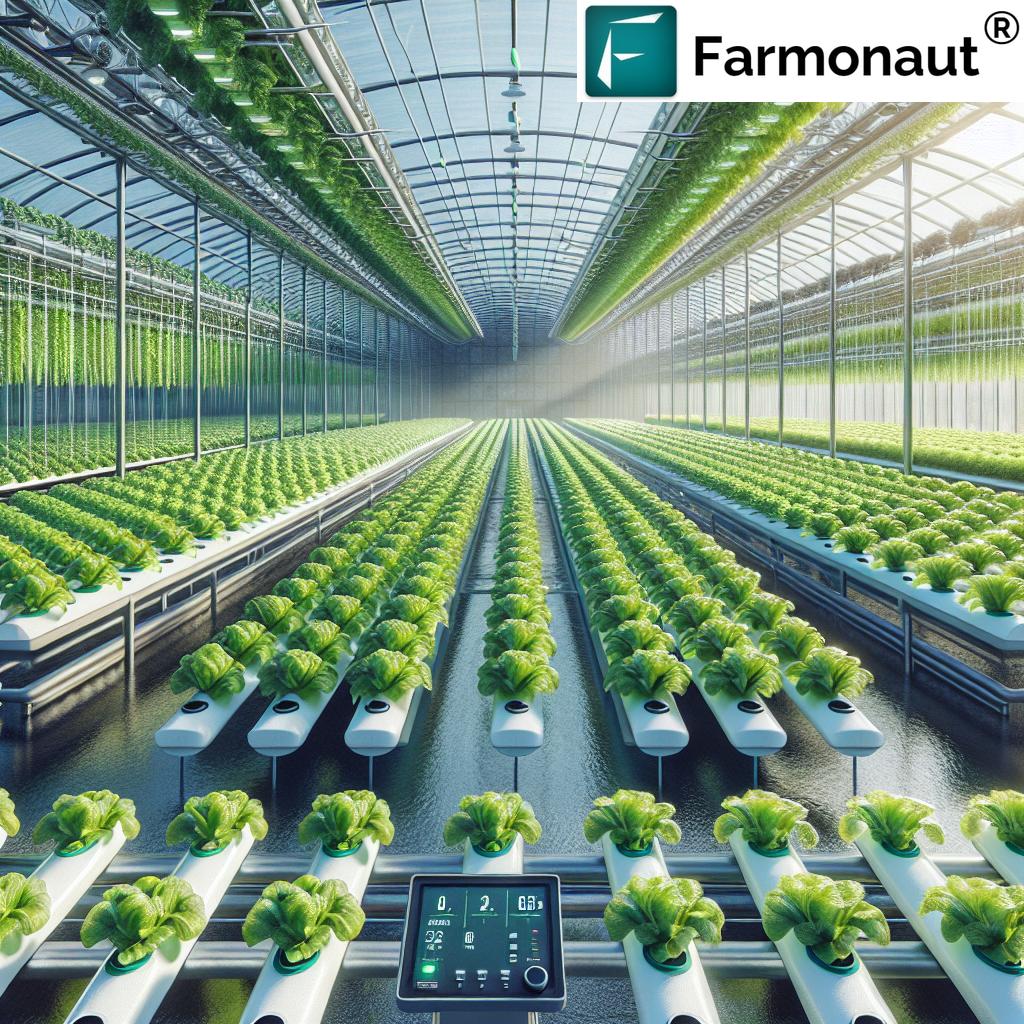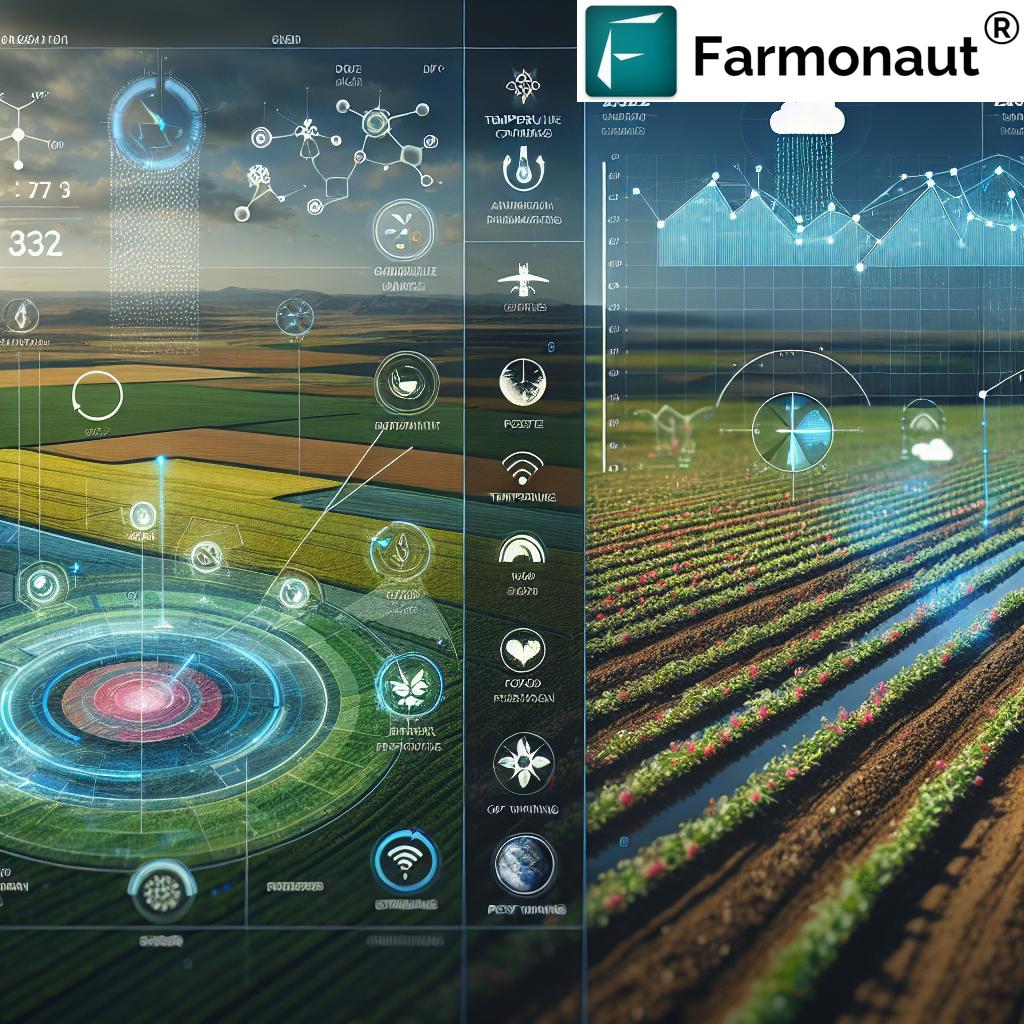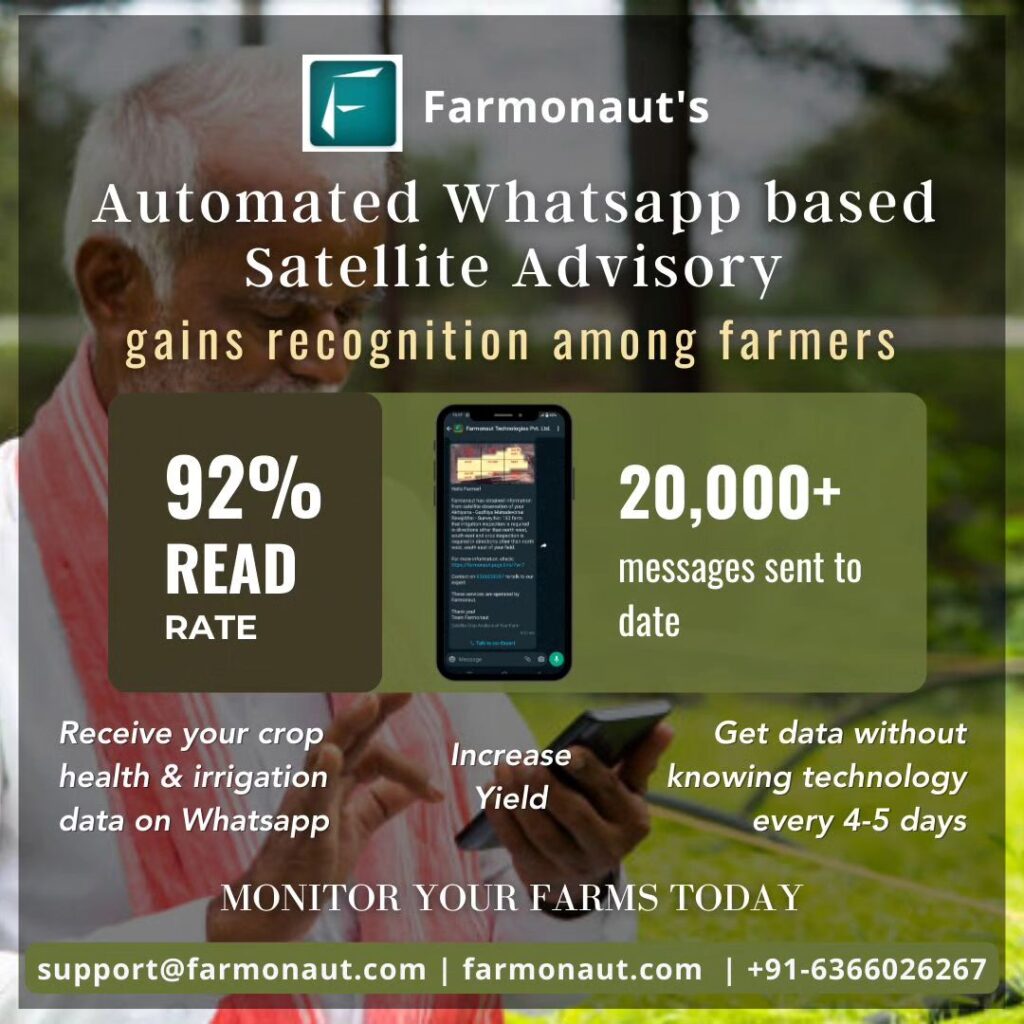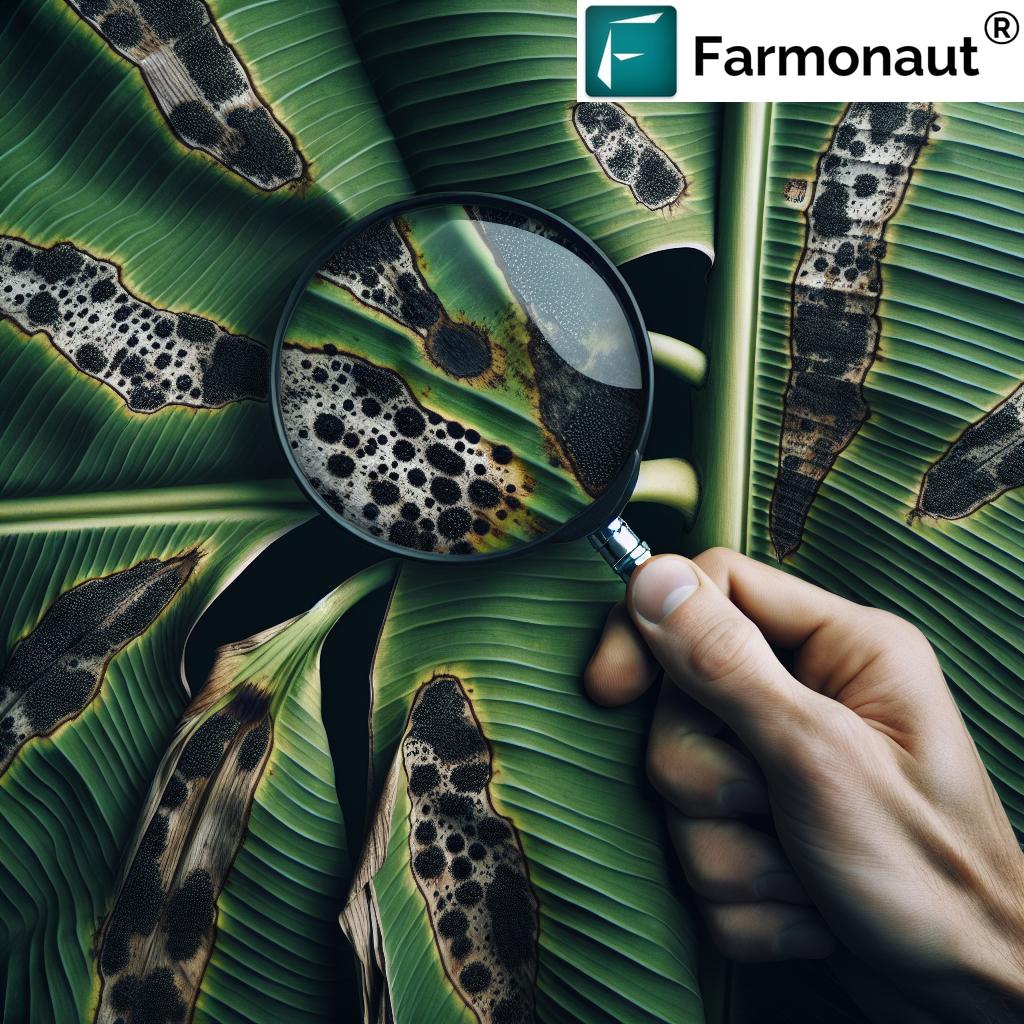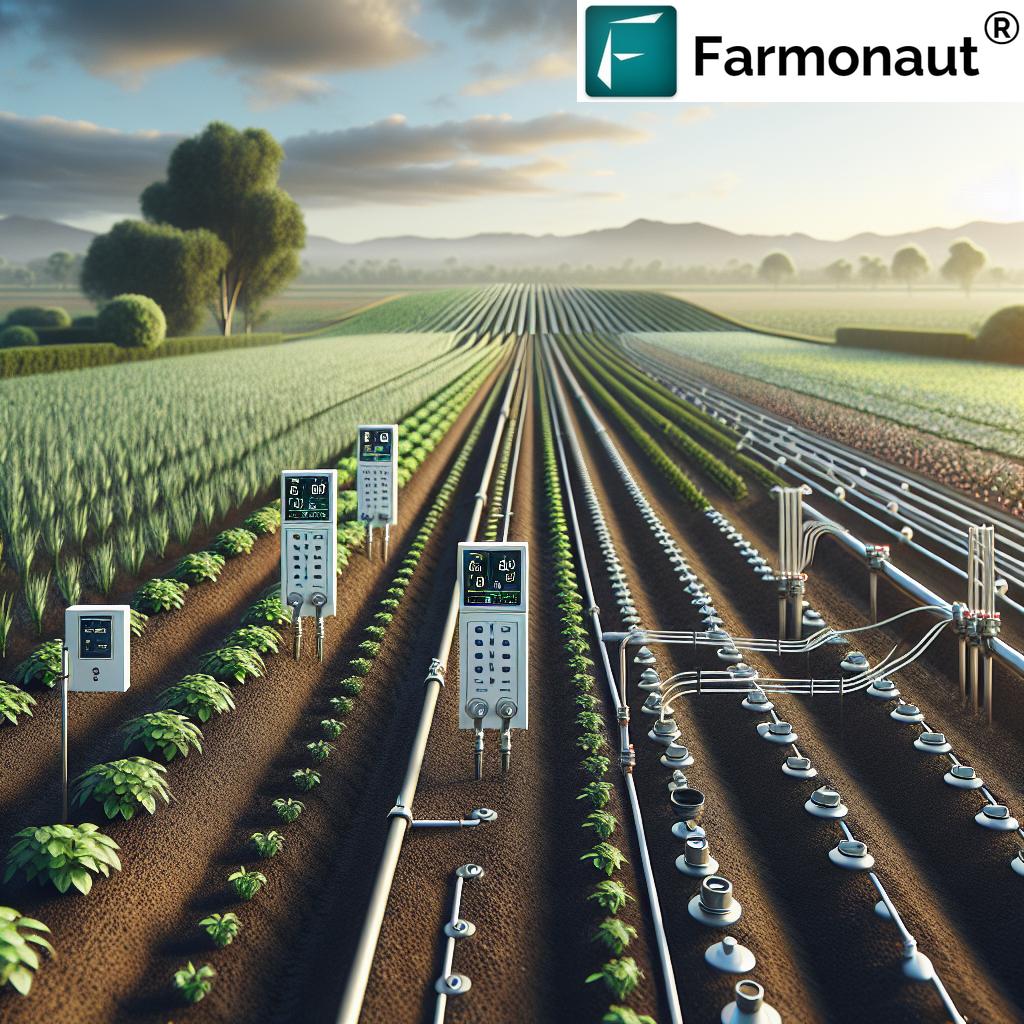Advanced Technology in Agriculture: 10 Shocking Innovations
Summary: The integration of advanced technologies—such as artificial intelligence (AI), machine learning (ML), Internet of Things (IoT) devices, and precision agriculture—is revolutionizing farming and forestry. By adopting innovations like autonomous machinery and controlled environment agriculture, our industry is boosting yields, efficiency, sustainability, and resilience across the globe.
“AI-powered precision agriculture can increase crop yields by up to 30% compared to traditional farming methods.”
Introduction to Advanced Technology in Agriculture
The twenty-first century is witness to an unprecedented transformation in agriculture—a change powered by explosive growth in technology and innovation. From AI-driven precision agriculture and IoT in agriculture to autonomous farm machinery and vertical farming systems, we are experiencing a shift that is making farming smarter, more efficient, and more sustainable.
But what does this advanced digital revolution really mean for farmers, crops, the environment, and the future of global food production? In this comprehensive guide, we unveil ten truly shocking innovations reshaping the agricultural sector—from soil tillage to harvesting and from supply chain traceability to smart environmental management.
At the heart of this movement lies the integration of data-driven insights, satellite imagery, and automation—enabling us to address challenges around food security, climate change, labor shortages, and the urgent need for sustainable practices. Let’s explore how these groundbreaking technologies are revolutionizing our approach to growing, managing, and distributing food on a global scale.
1. Artificial Intelligence & Machine Learning in Agriculture
The application of artificial intelligence (AI) and machine learning (ML) is sparking a revolution in agricultural data analytics, ushering in a wave of precision agriculture that is transforming how we predict, monitor, and manage crops. By processing massive datasets derived from satellite imagery, IoT sensors, climate models, and historical yield records, AI and ML systems provide actionable insights for farmers.
- Crop Yield Forecasting: Machine learning models analyze past yield statistics alongside real-time environmental data, allowing farmers to predict optimal planting windows and select resilient crop varieties.
- Pest & Disease Detection: AI systems scan images of leaves and stems to identify early signs of pest infestation or disease, enabling precision interventions and reducing crop losses.
- Resource Optimization: By integrating data from sensors (soil moisture, humidity, light, and temperature), AI can instruct automated systems for precise irrigation, fertilization, and pesticide application.
- Satellite-Driven Monitoring: Advancements in AI interpret multispectral satellite images, optimizing large-scale farm management by identifying areas of stress, nutrient deficiencies, or growth anomalies.
Farmonaut is leading in this domain, offering sophisticated AI-based advisory systems like Jeevn that transform satellite data and weather info into personalized, real-time crop management strategies—significantly increasing farm productivity and efficiency for farms of all sizes.
Explore Farmonaut’s Precision Agriculture Platform:
Large-scale Farm Management App
Custom APIs for Data Integration:
Farmonaut API Access | Developer Docs
2. IoT in Agriculture: Smart Sensors & Real-Time Monitoring
The proliferation of the Internet of Things (IoT) in agricultural practices has made real-time monitoring and control the norm for smart farms. Networked sensors gather live data on environmental conditions—including soil moisture, temperature, humidity, light levels, and plant health indicators—enabling farmers to:
- Pinpoint water and fertilizer needs down to the square meter, supporting precision agriculture and resource management.
- Reduce water waste and maximize irrigation efficiency through smart management systems.
- Monitor pest and disease pressure for early, targeted intervention.
- Receive instant alerts for adverse environmental changes or equipment failure.
By integrating IoT in agriculture, we are paving the way for sustainable food production, improved crop health, and reduced operating costs. With platforms like Farmonaut, even small and medium-sized farms now have access to real-time farm insights for smarter, data-driven decisions.
Discover resource management tools:
Agriculture Fleet Management
“Over 70% of large farms worldwide now use smart sensors to monitor soil health and optimize resource use.”
3. Autonomous Farm Machinery & Robotics: Efficiency Redefined
The emergence of autonomous farm machinery—including self-driving tractors, robotic planters, automated harvesters, and weeders—marks a major evolution in smart farming technologies. These machines, guided by AI, GPS, and advanced sensors, are transforming farm labor and boosting efficiency, especially on large-scale plantations.
- Labor Efficiency: Robots can work around the clock, reducing labor costs, streamlining planting and harvesting schedules, and limiting human error.
- Precision Operations: Autonomous machinery precisely plants, waters, and harvests crops, improving yield consistency and minimizing waste.
- Environmental Benefits: With smart navigation and data-driven operation, these systems reduce unnecessary fuel consumption, preventing soil compaction and preserving field structure.
- Scalability: Modern automation makes it possible to efficiently manage both expansive farms and smaller operations with limited human personnel.
Farmonaut’s resource and fleet management tools empower agribusinesses to seamlessly integrate autonomous equipment into their operations, optimizing vehicle tracking, safety, and field logistics for greater productivity.
Learn more:
Fleet Management Solutions
4. Controlled Environment Agriculture: Vertical Farming, Hydroponics & Aeroponics
Controlled environment agriculture (CEA) is at the forefront of sustainable food production. By growing crops in precisely regulated indoor environments, we control temperature, humidity, light levels, and nutrient delivery, breaking the limitations of season and geography. CEA incorporates several advanced techniques:
4.1 Vertical Farming Systems
Vertical farming systems optimize space usage and resource efficiency by growing crops on stacked shelves or towers. This method:
- Maximizes yield per square foot, enabling agriculture in densely populated urban environments.
- Drastically reduces water consumption—up to 95% less than traditional farming methods.
- Allows local, year-round production of leafy greens, herbs, and even some fruits.
- Reduces the carbon footprint by minimizing transportation needs.
4.2 Hydroponics and Aeroponics
Hydroponics and aeroponics are revolutionary soilless methods offering complete control over plant nutrition and growing conditions:
- Hydroponics: Plants are grown with their roots immersed in a nutrient-rich water solution, promoting faster growth, larger yields, and reduced resource waste.
- Aeroponics: Plants are suspended in air, with their roots periodically misted with a nutrient solution, maximizing oxygenation and further reducing water usage.
Innovations in LED lighting, climate control, and nutrient delivery make these systems highly productive and resilient, unlocking a new era for sustainable urban agriculture.
Discover the power of soilless farming:
Crop Plantation & CEA Advisory
5. Aquaponics: Closed-Loop Food Production Systems
Aquaponics combines hydroponics with aquaculture (fish farming), creating a closed loop where:
- Fish waste supplies naturally rich nutrients for plant growth.
- Plants filter and clean the water, which is recirculated back to the fish tanks.
- This synergy fosters highly sustainable food production with minimal water usage and no synthetic fertilizers.
- It’s ideal for urban farming as well as rural areas facing water scarcity.
By integrating aquaponics into our agricultural systems, we maximize efficiency, reduce environmental impact, and support year-round crop and protein production.
6. Agrivoltaics & Renewable Energy Integration
Agrivoltaics merges solar energy generation with crop cultivation by installing solar panels above agricultural land. This innovative dual land use provides several advantages:
- Shading crops: Solar panels reduce excessive heat and water evaporation, protecting delicate plants and improving water retention.
- Energy generation: Farms generate renewable energy, offsetting operational costs and carbon emissions.
- Sustainable intensification: Landowners can benefit from two revenue sources—farming and electricity—without sacrificing one for the other.
This approach is a win-win for environmental sustainability, resource use efficiency, and climate resilience in the agricultural sector.
7. Drones in Agriculture for Data & Efficiency
Drones in agriculture have introduced a new era of field monitoring and targeted action. Armed with high-resolution cameras and sensors, drones provide:
- Field Mapping: Rapid, detailed aerial surveys for assessing crop condition, plant density, and water stress.
- Pest and Disease Detection: Early identification of trouble zones allows precision spraying and targeted intervention.
- Variable Rate Application: Automated pesticide or fertilizer delivery maximizes efficiency while reducing chemical use and environmental runoff.
- Disaster Assessment: Post-storm imagery helps evaluate damage quickly, supporting insurance claims and recovery efforts.
Drone-acquired data is a foundation for agricultural data analytics platforms, driving smarter farm management and more resilient crop production.
Start optimizing field monitoring today:
Precision Aerial Farm Insights
8. Smart Sensors and Automated Irrigation for Water Efficiency
Effective water management is at the heart of sustainable agriculture. Today’s smart sensors and automated irrigation systems empower farmers to deliver water precisely when, where, and in the quantity it’s needed.
These systems use IoT soil moisture sensors to monitor:
- Current soil moisture levels at various depths
- Evapotranspiration rates under changing weather conditions
- Crop-specific water requirements
The data is fed into automated controllers that dynamically adjust irrigation valves and schedules, reducing water waste, preventing over/under-watering, and lowering both input costs and environmental impact.
Explore IoT-driven farm management tools for automated irrigation and water management:
Farmonaut Fleet & Irrigation Management
9. IoT in Livestock Monitoring and Herd Health
Beyond crops, IoT devices are revolutionizing livestock management. Wearable sensors attached to animals capture health, activity, and location data, including:
- Movement and behavioral patterns
- Vital signs (body temperature, heart rate)
- Feeding and rumination activities
With real-time monitoring, farmers can:
- Identify health issues before symptoms become visible, enabling prompt treatment
- Ensure efficient grazing rotation and prevent theft or loss
- Boost productivity through data-driven herd management
Farmonaut’s livestock-related features, in combination with its robust agronomy monitoring platform, make monitoring animal health and resource allocation easier and smarter than ever.
For expert advisory on animal management and CEA:
Livestock & Plantation Advisory
10. Controlled Release Fertilizers & Crop Nutrition
Controlled Release Fertilizers (CRFs) are engineered to deliver nutrients to plants gradually, matching uptake rates and growth cycles. The advantages include:
- Instead of nutrients leaching away after heavy rains, CRFs ensure a steady, time-controlled release.
- They reduce environmental waste and minimize fertilizer runoff into waterways, promoting sustainability.
- Ensure consistent nutrient supply, leading to better crop health, growth, and improved yields with minimum input waste.
Paired with soil sensors and AI modeling, farmers can further customize fertilizer type, timing, and dosage for every field and crop—regardless of weather or environmental fluctuations.
Farmonaut provides satellite monitoring and AI insights for:
Smart Fertilization Advisory
11. Blockchain Technology for Food Traceability and Trust
Blockchain in agriculture is revolutionizing the integrity and transparency of food supply chains. By recording every step from farm to consumer in a tamper-proof, decentralized ledger, blockchain:
- Improves food safety by validating product origin, batch data, and journey to market.
- Increases consumer trust by enabling verification of organic, fair trade, or specialty certifications.
- Reduces fraud, contamination risk, and supply chain opacity with immutable records.
Farmonaut is at the forefront with its blockchain-based traceability platform. Whether you’re in the textile, food, or agribusiness sector, this innovation empowers producers and brands with auditability and consumer-facing transparency.
Discover: Product Traceability Solutions for Agriculture
Comparison Table of Agricultural Technologies and Their Impact
| Innovation Name | Technology Used | Primary Benefit | Estimated Efficiency Boost (%) | Estimated Yield Improvement (%) | Sustainability Impact |
|---|---|---|---|---|---|
| AI & ML in Agriculture | Artificial Intelligence, Machine Learning | Optimized Decisions, Pest Prediction, Resource Reduction | 20–35% | 15–30% | CO2 Reduction ~20% |
| IoT in Agriculture | Smart Sensors, IoT Devices | Real-Time Monitoring, Water Efficiency | 18–28% | 10–18% | Less Water Usage ~30% |
| Autonomous Farm Machinery | Robotics, GPS, AI Navigation | Labor Saving, Precision Work | 15–30% | 12–20% | Reduced Fuel, Soil Preservation (~12%) |
| Vertical Farming Systems | Hydroponics, LED Lighting, Automation | Maximizes Space, Urban Feasibility | 20–40% | 25–30% | Water Saving ~95%, CO2 Drop ~20% |
| Hydroponics & Aeroponics | Soilless, Nutrient Solution Tech | Faster Growth, No Soil Needed | 18–35% | 20–28% | Less Water & Chemical Use |
| Aquaponics | Water Recirculation, Fish-Plant Systems | Dual Protein & Plant Produce | 10–18% | 15–22% | Zero Chemical Fertilizer |
| Agrivoltaics | Solar Panels, Energy Management | Energy & Crop Dual Use | 8–14% | 6–10% | CO2 Offset ~40% |
| Drones in Agriculture | Aerial Imaging, IoT, AI | Rapid Crop Data, Precision Application | 16–27% | 10–15% | Lower Pesticide Use |
| Smart Sensors & Automated Irrigation | IoT Sensors, Automation | Water Savings, Crop Health | 20–28% | 12–18% | Water Use Cut ~30% |
| Blockchain in Agriculture | Blockchain, Data Security | Traceability, Food Safety | N/A | N/A | Supply Chain CO2 Cut (indirect) |
Farmonaut Subscriptions – Unlock Precision Agriculture for All
Farmonaut democratizes precision agriculture with cost-effective, scalable, subscription-based farm management tools. Whether you’re a smallholder, enterprise, or agribusiness, choose the package that fits your needs and access real-time insights, satellite crop monitoring, and AI-driven advisory features from anywhere, on any device:
Key Challenges & Considerations in Adopting Advanced Agricultural Technologies
While the benefits and promise of advanced technologies in agriculture are massive, certain challenges persist and must be carefully managed:
- Cost Barriers: Many solutions—especially for autonomous machinery or controlled-environment systems—have prohibitive upfront costs for smallholder farmers. Affordable subscription platforms and government incentives are helping bridge this gap.
- Training & Knowledge: Next-generation technologies require access to expert training and ongoing support for effective implementation.
- Data Privacy & Cybersecurity: Robust measures are necessary to protect farm data, operational systems, and the privacy of sensitive user information.
- Labor Displacement: Automation can reduce demand for manual labor, raising questions about retraining, reskilling, and the future of rural employment.
- Connectivity: Internet access remains limited in some rural and developing regions, impeding adoption of cloud-based and connected agricultural platforms.
Addressing these hurdles is critical for ensuring equitable access to the sustainable food production systems of the future.
Farmonaut enables financing/insurance verification:
Crop Loan & Insurance Solutions
Frequently Asked Questions
-
What is precision agriculture, and how does it benefit farming?
Precision agriculture is the use of advanced technologies such as AI, IoT, satellite data, and smart sensors to manage crops at a micro-level. It helps farmers optimize resource use, improve yields, reduce input costs, and minimize environmental impact by applying fertilizers, water, and pesticides only where and when needed. -
How can smaller farms adopt advanced agricultural technologies?
Farmonaut’s subscription-based, satellite-driven farm management platform is specifically designed to be accessible and affordable for small to medium-sized farms. Farmers can use its Android, iOS, or web app to access real-time insights and advisory services without needing to invest in expensive hardware. -
Is vertical farming energy-intensive?
Vertical farming typically requires significant energy for LED lighting and climate control. However, integrating renewable energy sources such as solar panels and implementing agrivoltaic techniques are making these systems increasingly sustainable. -
How does blockchain support agricultural traceability?
Blockchain creates an unchangeable digital record for every stage in the lifecycle of agricultural products, from planting and harvest through processing and delivery. This ensures transparency, prevents fraud, and enhances consumer trust in food safety and product origin. -
What data does Farmonaut’s platform use, and is it secure?
Farmonaut processes satellite imagery, weather forecasts, soil health data, and user inputs, all encrypted through industry-standard protocols to ensure data security and privacy for all users.
Conclusion: The Future of Agriculture Lies in Advanced Technology
The integration of AI, machine learning, IoT, drones, and autonomous systems is fundamentally changing how farms are run, food is produced, and our planet is sustained. By adopting precision agriculture and smart farming technologies, we are solving age-old challenges in yield enhancement, resource management, and environmental stewardship.
At the center of this revolution, Farmonaut empowers farmers, agribusinesses, and governments alike with actionable insights, cost-effective satellite farm management, and blockchain-driven transparency.
The agricultural sector faces a bright, data-driven, and resilient future—one where productivity is maximized, waste is minimized, and sustainable food production becomes the norm for people and the planet.
We encourage growers and agribusiness professionals worldwide to embrace these innovations, improve their operations, and build a more secure, efficient, and sustainable food system for coming generations.
Looking for a comprehensive platform that combines satellite monitoring, AI advisory, supply chain traceability, and resource optimization?
Discover Farmonaut’s cutting-edge solutions for:
-
Improving carbon footprint tracking and enabling sustainability reporting:
Carbon Footprinting Solution -
Ensuring food safety and supply chain transparency:
Blockchain-based Product Traceability -
Enhancing large-scale plantation, field, and forestry management:
Agro-Admin Platform





